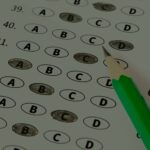Your voice matters! Attend a virtual or in-person session to share your thoughts on school facilities. ➔ Find a session near you

This brief provides a summary of the major assessments administered in the School District of Philadelphia (SDP) and student participation in these assessments during the 2022-23 school year.

Each year, SDP and its partner organizations offer a variety of summer programs to ensure that students, especially those most vulnerable to experiencing summer learning loss, have the opportunity to continue learning during the summer months. This report provides a summary of the 2023 summer programs, including information about enrollment and attendance, and findings from surveys and observations.

At the School District of Philadelphia, PSSA performance is the focus for three of the five goals adopted by the Board of Education. This data brief describes District-wide trends in PSSA performance between the 2018-19 (pre-Covid) and 2022-23 school years.

This brief describes the District-wide tests administered at the School District of Philadelphia (SDP) during the 2021-22 school year and provides details about student participation.

In the 2021-22 school year, the School District of Philadelphia (SDP) created a fully virtual Quarantine School for SDP students who needed to quarantine at home due to the Covid-19 pandemic. This report summarizes 2021-22 Quarantine School attendance, describes what took place in the Quarantine School virtual classrooms, and examines feedback from students, parents, and teachers about their experiences with Quarantine School.

The Pennsylvania Department of Education (PDE) provides grant funding to eight regions in Pennsylvania to serve students experiencing homelessness through the Education for Children and Youth Experiencing Homelessness (ECYEH) program. This brief provides information about progress toward the goals of the ECYEH grant program and priorities of SDP staff.

This brief explores 2022-23 Philadelphia public school enrollment patterns at District, Alternative, Philadelphia Charter, and Cyber Charter schools, including by school admission type and student demographics, as well as changes in those patterns since 2014-15.

This research brief highlights the changes in the percentage of students scoring in the Proficient or Advanced performance groups on the PSSA exams from 2019 (pre-Covid) to 2022 (post-Covid) in Pennsylvania school districts.

Each year, SDP and its partner organizations offer a variety of summer programs to ensure that students, especially those most vulnerable to experiencing summer learning loss, have the opportunity to continue learning during the summer months. This report provides a summary of the 2022 summer programs, including information about enrollment and attendance, and findings from surveys and observations.

The 2021-22 school year was the first year that the PSSAs and Keystones were administered normally since 2018-19 (pre-pandemic). These briefs describe District-wide performance trends on the PSSAs and the Keystone exams from 2014-15 to 2021-22.